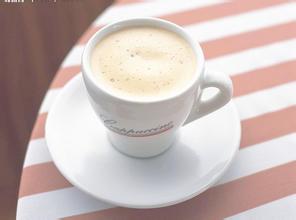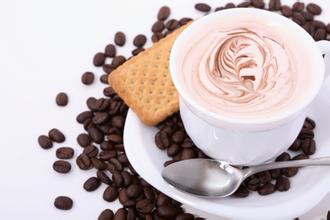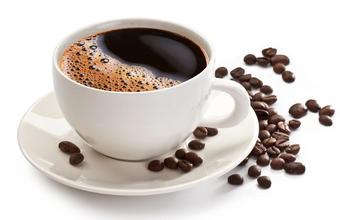Introduction to Hawaiian Kona Coffee with strong flavor
Hawaii is a paradise for tasting and buying coffee. Each island has several unique places for tourists and local residents to taste and buy coffee, including comfortable and warm shops and comprehensive centers to introduce coffee knowledge. In Hawaii, you can watch the fiery sunset sink into the red-orange sea, feel the fresh air filled with the scent of flowers, and sit by the sea and drink a cup of coffee. I'm afraid there is no place in the world that can offer you such enjoyment.
In 1813, a Spaniard first grew coffee in the ManoaValley Valley of Oahu, which is today the main campus of the University of Hawaii. In 1825, an English agronomist named John Wilkinson transplanted some coffee from Brazil to grow in the coffee garden of Chief Birch on the island of Oahu. Three years later, an American missionary named Samuel Riveland Rags brought the branches of the coffee tree from Birch Emirates Garden to Kona, a descendant of the Arabica coffee tree that first grew on the Ethiopian plateau. To this day, Kona Coffee still carries on its noble and ancient lineage.
Growth environment editing
The quality of the fine Kona coffee is suitable for the right geographical location and climate. Coffee trees grow on the slopes of volcanoes, and their geographical location ensures the altitude needed for coffee to grow; the dark volcanic ash soil provides the necessary minerals for coffee. This is probably due to the fact that Kona Island is rich in volcanic black mud with moderate acidity, rich mineral content and suitable water content. And every afternoon, a cloud floats over the island of Kona to block out the sun to protect fragile coffee saplings.
The climate is very suitable, the sun in the morning gently passes through the air full of water vapor, in the afternoon, the mountains will become more humid and foggy, and the white clouds surging in the air are natural umbrellas for coffee trees, and the evening will become sunny and cool. Because of the suitable natural conditions, the average yield of Kona coffee is very high, reaching 2240 kg per hectare, while the yield of coffee in Latin America is only 600 kg to 900 kg per hectare.
Kona coffee is grown without shelter, and Hawaii has an island climate, often with a dark cloud, resulting in a shading effect. Coffee farmers in Hawaii usually keep their farms quite clean, and the fertile land, coupled with the fine management of farmers, is suitable for the climate in which coffee grows. Kona Coffee has become a boutique coffee on the market. [1]
Cover factor editing
Environmental requirements
Kona coffee
Kona coffee
Soil: fertile tropical Hawaiian volcanic soil that provides the dense nutrients of the Kona Coffee Tree.
Altitude: the appropriate altitude of 2100 to 3600 meters and the cool moonlight promote the fruit of Kona Coffee to ripen slowly and create an excellent taste with rich appearance and full moisture.
Rizhao: the warm tropical sun plays an important role in the reproduction of coffee trees. Hawaii provides the morning light that Kona Coffee needs.
Cloud cover: due to the rise of clouds at noon, the severe direct sunlight is ensured and stopped.
Rainfall: cloud cover brought enough Rain Water, so that after a morning sun coffee, eager to enjoy the afternoon Rain Water's moisturizing baptism.
Slope: a good slope makes Kona coffee absorb enough water in the soil without absorbing too much and affecting the flavor of the coffee.
Planting pattern
Kona coffee has always been grown at home. At first, only men were allowed to work in the coffee garden, and later women joined in. This kind of family production of Hawaiians preferred to rely on the efforts of their families rather than hiring workers to work, so it was normal for Hawaiians to have eight or nine children at that time.
Since then, new immigrants from the Philippines, the United States and Europe have come to Hawaii to engage in the coffee industry. Over time, Hawaii has formed a social atmosphere that centers on family culture and is easy to absorb foreign cultures. and make it a major feature of Hawaii.
The harvest season of Kona coffee is from late August to January of the following year, when farmers pick the ripe fruit in batches and get coffee beans after processing.

Important Notice :
前街咖啡 FrontStreet Coffee has moved to new addredd:
FrontStreet Coffee Address: 315,Donghua East Road,GuangZhou
Tel:020 38364473
- Prev

Dominican coffee beans washed Santo Domingo coffee
Original name: Dominican round beans (male beans) Country: Dominicana Manor: Barahona Treatment: Wet-Processed Washing Treatment Recommended Roast Degree: Medium Roast So-called round beans (also known as male beans): Coffee beans are not male or female, the correct term is lentil Flat Beans and round beans Peaberry. Under normal circumstances, a coffee brew
- Next

Introduction of Crystal Coffee Manor in southeastern Cuba
The earliest archaeological landscape of coffee plantations in southeastern Cuba, located in the Maestra Mountains in southeastern Cuba, was a coffee-growing area in southeastern Cuba in the 19th and early 20th centuries. Mount Maestra averages 1500 meters above sea level, straddling Guantanamo and San Diego
Related
- Does Rose Summer choose Blue, Green or Red? Detailed explanation of Rose Summer Coffee plots and Classification in Panamanian Jade Manor
- What is the difference between the origin, producing area, processing plant, cooperative and manor of coffee beans?
- How fine does the espresso powder fit? how to grind the espresso?
- Sca coffee roasting degree color card coffee roasting degree 8 roasting color values what do you mean?
- The practice of lattes: how to make lattes at home
- Introduction to Indonesian Fine Coffee beans-- Java Coffee producing area of Indonesian Arabica Coffee
- How much will the flavor of light and medium roasted rose summer be expressed? What baking level is rose summer suitable for?
- Introduction to the characteristics of washing, sun-drying or wet-planing coffee commonly used in Mantenin, Indonesia
- Price characteristics of Arabica Coffee Bean Starbucks introduction to Manning Coffee Bean Taste producing area Variety Manor
- What is the authentic Yega flavor? What are the flavor characteristics of the really excellent Yejasuffi coffee beans?

